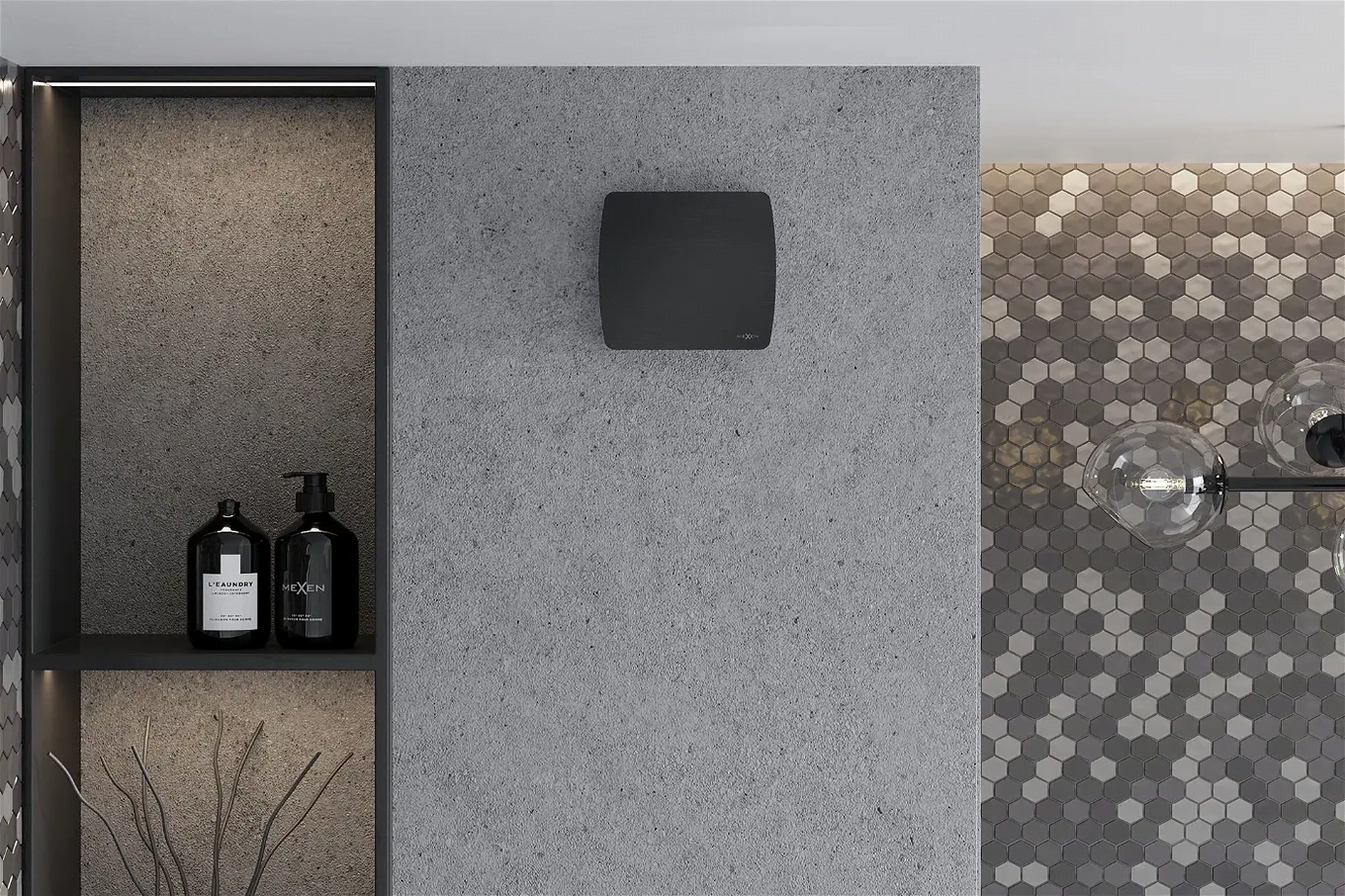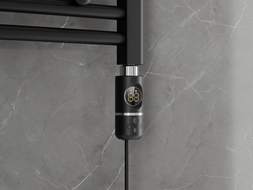
A bathroom fan is an essential element ensuring proper air circulation and moisture removal from the bathroom. The choice of the right fan can be decisive for user comfort and air quality in the room.
In this guide, we will discuss the types of bathroom fans available on the market, key technical data, functions, and how to choose a fan based on... the noise generated. What bathroom fan should you choose? Here are a few words on this in the next part of the article.
Types of Bathroom Fans Available on the Market
When looking for the right fan for the bathroom, you should pay attention to several important issues, as there are different types of such devices available on the market.
Depending on how they work, bathroom fans can be divided into two main types:
- extraction fans – these are the most commonly encountered type of fans. They remove moisture and unpleasant odors from the bathroom by venting them outside. They are usually installed on the ceiling or wall;
- inlet-extraction fans – this type of fan not only removes moisture and odors but can also supply fresh air to the room. This is an ideal solution for bathrooms without windows.
Classification of Devices Based on Bathroom Fan Installation
When it comes to the installation method of fans, among the devices available on the market, you can find:
- duct fans – these fans are placed in the ventilation duct. They are suitable for large bathrooms and require ventilation systems;
- non-duct fans – this type of fan is easy to install as it does not require a ventilation duct. They work excellently in small bathrooms and toilets.
Technical Data to Pay Attention to When Choosing a Bathroom Fan
When choosing a bathroom fan, you shouldn’t only focus on its price. There are various technical data you should pay attention to even before purchasing the device. These include:
- efficiency,
- noise level,
- energy consumption,
- fan control method.
Efficiency of the Bathroom Fan
The efficiency of a fan is expressed in cubic meters per hour (m³/h). In other words, efficiency determines how much air a fan can process in one hour, or how quickly it can extract “used” air from the bathroom.
This value should be matched to the size of the room, as a device with too low efficiency will not be able to effectively drain moisture or unpleasant odors from the bathroom.
It is recommended that the efficiency be at least three times greater than the volume of the bathroom. Efficiency is marked on the packaging of the fan. Simply estimate the volume of the room and multiply it by three. This is especially important for large bathrooms. In small rooms, most fans available on the market have efficiency that even exceeds their size. Typically, a fan allows for 10 - 15 air changes per hour.
Noise Level
Fans are mechanical devices that generate noise, which is why it is very important to choose a fan with the lowest possible noise level. Especially if the apartment is small or if the bathroom is near the bedroom. The fan should not be heard in other rooms when it is running.
The noise level generated during the fan's operation is measured in decibels (dB). The recommended noise level in the bathroom is around 30-40 dB. The quietest fans available on the market produce sound at a level of around 21 dB, which means their volume is comparable to a whisper.
Fan Control Method
Most often, the bathroom fan is switched on automatically, but there are also fans available on the market with pull cord switches and devices connected to light switches. The latter type will not work for bathrooms equipped with a window, where we do not switch on the light during the day. In this case, an automatic fan or a manually operated pull cord switch is a better solution.
Electricity Consumption
Bathroom fans do not consume too much power - it is estimated that devices intended for home use consume between 10 and 100 watts. If you want to control the amount of electricity consumed, pay attention to the markings on the fan's packaging.
By choosing a manually controlled device, you will have real influence over the fan’s operating time, and thus the amount of power consumed. In this situation, it might seem that automatically operating fans consume more electricity - in reality, these differences are minimal.
Functions of Bathroom Fans
The most important function of bathroom fans is air exchange in the room. However, most modern devices are equipped with a range of additional features that impact their usability.
Motion Sensor
A bathroom fan with a motion sensor turns on immediately after entering the bathroom. The device can be connected to an automatic timer, which will turn off the fan after a certain time if no motion is detected in the room.
Humidity Sensor
Fans with a humidity sensor turn on automatically at high humidity levels, for example, after a bath. This solution prevents water from settling on walls or bathroom furniture, thereby minimizing the risk of mold or mildew.
Choose a bathroom fan with a humidity sensor. Decide which model will work best in your bathroom or take advantage of the opportunity to consult with our specialist.
Light Sensor
Fans with a light sensor are suitable for rooms without windows. Such fans are connected to the lighting switch.
There are several types of fans equipped with light sensors. Some turn on simultaneously with the light, while others will only activate the fan when the light has been on for a certain time.
Where to Install the Bathroom Fan?
The fan is mounted in the place of the ventilation grille located on the wall or ceiling.
Bathroom fans can also differ from each other in installation methods, which is worth remembering when shopping. It is good to know the diameter of the ventilation duct where the new device will be placed. This way, there will be no need for additional construction work during its installation.
Which Bathroom Fan to Choose – Summary
The bathroom and toilet are places particularly prone to the accumulation of moisture and unpleasant odors. To prevent this, it is necessary to ensure proper air circulation. You will do this by installing a bathroom fan.
Bathroom fans available on the market may be equipped with additional solutions to improve their effectiveness. Most often these are motion sensors and humidity sensors.
When choosing the right device for your bathroom, it is essential to ensure it matches the volume of the room. This is especially crucial in the case of larger bathrooms.
Depending on your needs, you can opt for a bathroom fan connected to the light switch, a model equipped with a separate switch, or even a pull cord switch. Decide which solution will work best in your apartment or house.



















